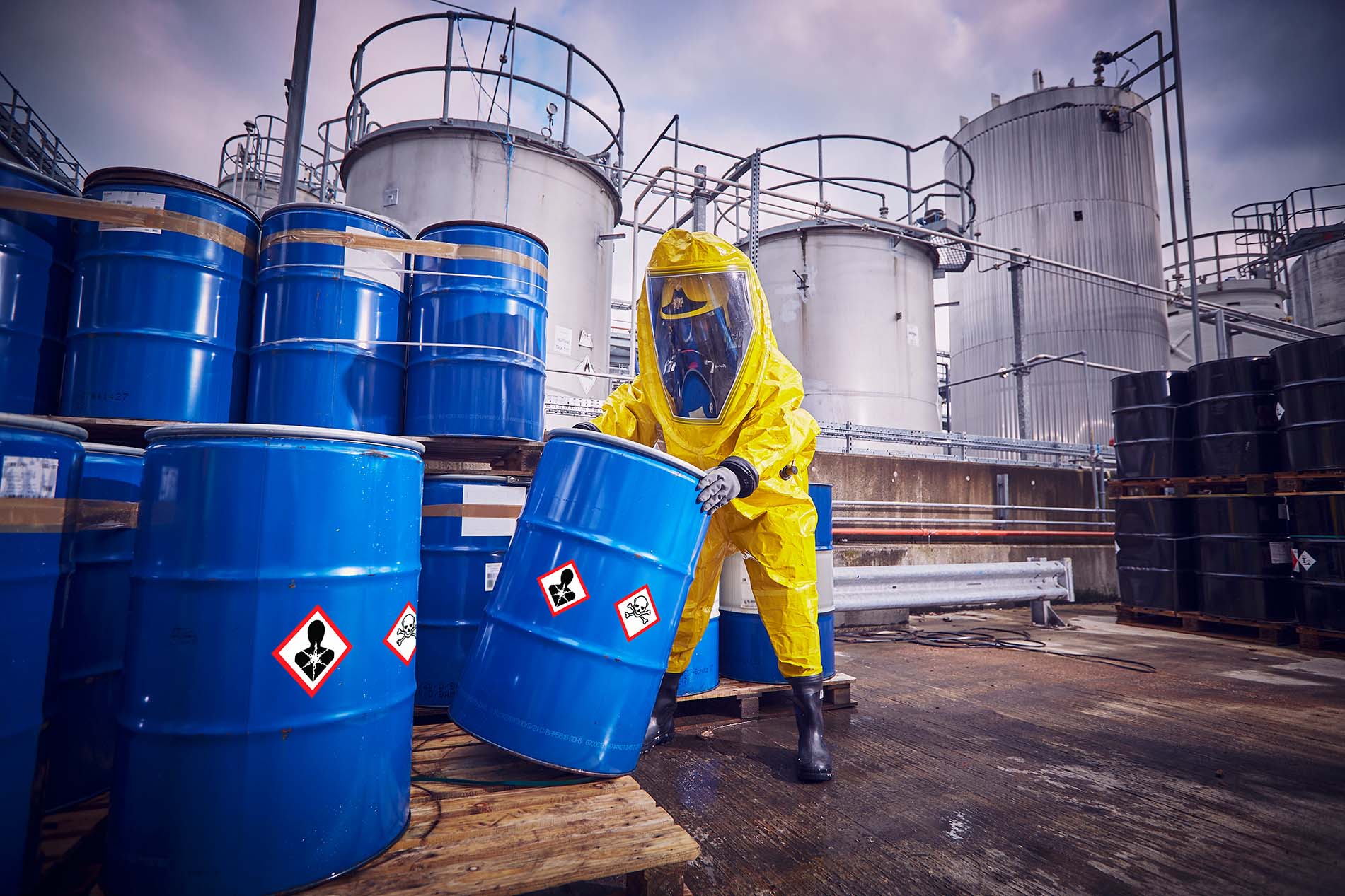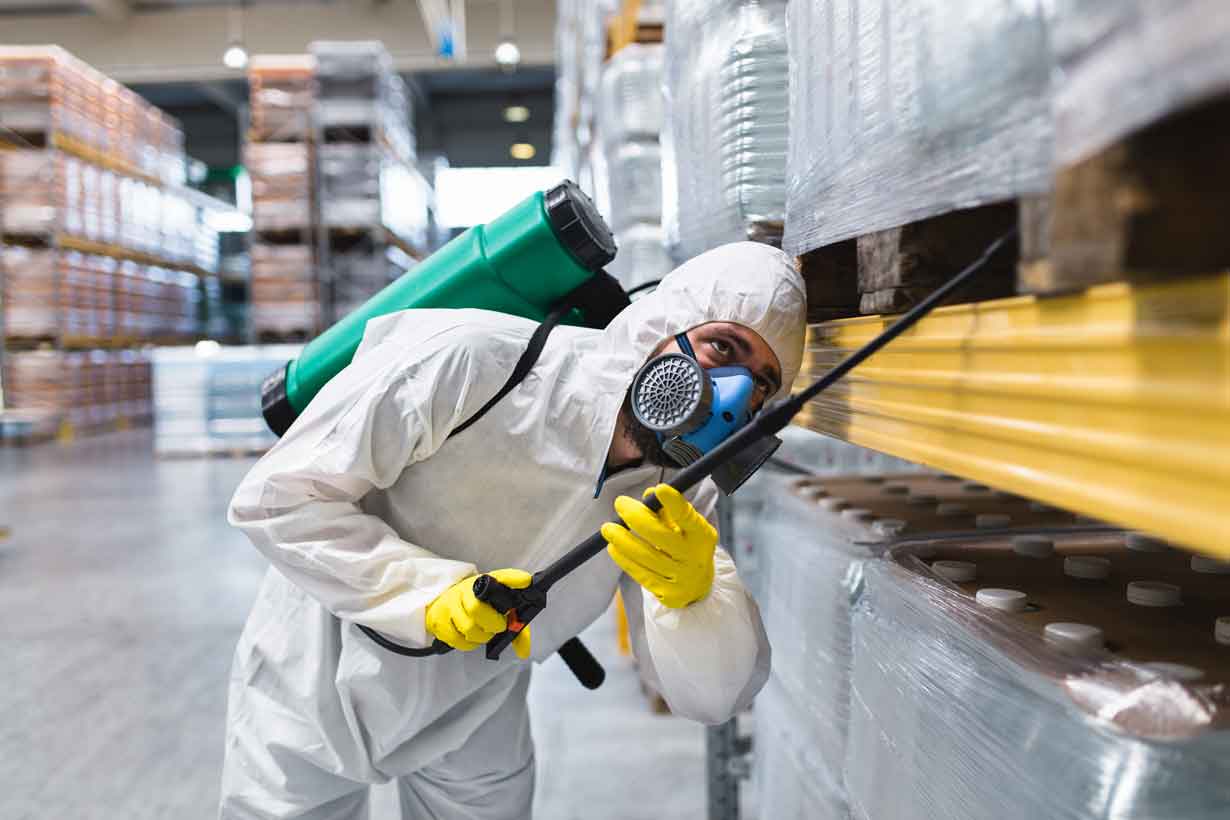

Chemical PPE: Debunking a Major Myth
By Grainger Editorial Staff 3/3/23
A long breakthrough time doesn’t always mean safe extended use of chemical PPE. Learn how exposure type, chemical toxicity and environmental factors influence PPE performance.
How well is your chemical PPE really protecting you? And would you know if it stopped working?
Sometimes, it’s easy to tell if there’s a problem.
You can sense if your PPE has been damaged by chemical exposure or a mechanical stress – you can see if there’s a tear or feel if there’s a puncture in the PPE material, allowing chemical to penetrate through the barrier.
When chemical damage occurs, the PPE material might harden and crack, it might soften and weaken or even elongate or discolor. These are all signs of degradation – chemical damage that impairs performance and reduce the material’s chemical protective properties.
There is, however, another mechanism where chemical interacts with your PPE that has no visual signs while occurring – this is called permeation. This is when a chemical is absorbed onto the outside of the PPE material, diffuses through its polymer layers and then releases or desorbs on the inside of the material. And you can’t see it happening.
So how can you be sure your PPE is protecting you from exposures that you might not even be able to notice at the time? And how can you be confident in your chemical protection when it may pass visual inspection even after chemicals have passed through it?
It’s critical to understand these basic principles.
Ashleigh Davidson is a senior research chemist for chemical protective PPE at Ansell. She answered three common questions about chemical PPE, and in the process debunked a pervasive and potentially harmful myth.
Can breakthrough time be used as a safe wear time?
Breakthrough time is an important piece of information when you’re choosing chemical PPE, but it might not mean what you think it does.
For any model of chemical gloves, suits or other chemical-resistant PPE, the manufacturer publishes breakthrough times for hazardous chemical groups based on rigorous testing. Intuitively, you might believe that these times indicate how long it takes for any amount of the chemicals to permeate the PPE.
In fact, breakthrough time is how long it takes for the chemical permeation to reach a particular speed – 0.1 micrograms per centimeter squared per minute. This is established by ASTM F739, the standard that manufacturers follow when testing chemical PPE for use in the U.S.
You can use breakthrough times to compare the relative effectiveness of garments, but the times aren’t meant to be used for hazard assessment. If a substance is toxic enough, it can cause harm to the wearer long before the breakthrough time is reached.
“There’s a misconception that a breakthrough time of greater than 480 minutes means you can wear a garment without any chemical exposure for 480 minutes. The reality is that you can still have a toxic exposure before that time,” said Ashleigh. “Over 480 minutes, you could have up to 48 micrograms of chemical per centimeter squared in direct contact with your skin, which can be quite dangerous when considering the toxicity of the chemical in question and contact area of the PPE exposed to chemical.”
To understand this danger, think about the difference between acute toxicity and chronic toxicity. When a chemical has acute toxicity, the harm it causes will be immediate, like the chemical burn caused by a strong acid or base. But when a chemical has chronic toxicity, it causes harm as small doses accumulate over long periods of time, potentially leading to cancers, organ damage and other serious health problems.
Chronic toxicity is one way that even small exposures to a chemical can cause serious harm in the long run. And it’s a good reason to put this chemical PPE myth to rest: breakthrough time is not the same as safe wear time.
How do I know if I’ve been exposed to a harmful amount of chemical before the breakthrough time?
Start by gathering as much information about PPE performance as you can. In addition to looking at the breakthrough time, consider the cumulative permeation data for the garments you’re evaluating.
Cumulative permeation was added to ASTM F739 in 2020, so it may be unfamiliar to many in the industry. Unlike breakthrough time, which tells you how long it takes for permeation to reach a certain speed, cumulative permeation tells you the exact amount of a chemical that permeates each square centimeter of the material.
This matters for hazard assessment because chemicals with high chronic toxicity can cause harm even in very small amounts. Repeated contact with even small quantities of these can be enough to increase the chance of cancer or organ damage.
For more information on some specific chemicals to watch out for, the OSHA Technical Manual includes a table of toxic chemicals noted for skin absorption. However, the agency states that the list isn’t meant to be comprehensive, and it doesn’t include a number of dermally hazardous chemicals, such as xylene and perchloroethylene. And OSHA has not published dermal personal exposure limits (PELs) to go with its PELs for airborne exposure.
“Dermal occupational exposure limits haven’t yet been established, and any attempts are unharmonized, but it’s a best practice to gather as much information as you can and use it to minimize the amount of toxic chemicals in contact with the skin,” said Ashleigh. Cumulative permeation is a critical data point for making these contact-limiting decisions and assessing worker’s long term occupational exposure risks.
What secondary factors can affect chemical PPE performance?
As we’ve seen, it’s important to gather all the data you can on the PPE you’re considering, and it’s important to recognize what these data points indicate – what breakthrough time and cumulative permeation really measure, for example.
It’s also important to remember that you’re probably not going to be using PPE under the same conditions as it was tested.
To start with, just think about the chemicals themselves. For testing purposes, PPE is exposed to the purest and smallest molecular weight of each chemical group. But in the real world, you’re more likely to be handling chemicals in mixtures, and chemicals behave significantly differently and have different properties when in a mixture than when isolated. which can change them.
Changes that happen when chemicals are present together are called synergistic interactions, and they can involve the components in a mixture as well as chemicals that are handled at different times and exposed to PPE in succession. These interactions can alter breakthrough time, cumulative mass permeated and maximum permeation rate for individual components of the mixture. So how reliable is single chemical data when making a hazard assessment when handling mixtures?
“When testing mixtures with the appropriate analytical methods that can isolate individual components, the reality is that we don’t see the same performance data we’d expect from single chemicals,” said Ashleigh. “The hazardous component can come through the PPE material much faster.” For highly toxic chemicals or components, it’s particularly important not to rely on pure chemical data alone when assessing a hazard.
Temperature poses a similar problem. ASTM F739 specifies that testing occurs at 27 C (about 81 F). Temperature is directly linked to the physical properties of the PPE polymer and chemicals, so you can expect differences in performance at other temperatures.
Abrasion and other damage resulting from mechanical hazards can interfere with PPE performance, too. It’s worth remembering that the technical data for a fabric is based on testing everything in isolation, one chemical or hazard at a time. But in a real-world application, several things will affect the PPE concurrently, which may increase the exposure to hazardous substances.
What's the bottom line?
It’s important to recognize that breakthrough time is just a starting point when you’re selecting chemical PPE. A longer breakthrough time indicates greater protectiveness against a certain chemical, but to assess the hazard, you’ll also need to consider many other questions, including:
- How toxic is the chemical?
- What synergistic interactions are possible? Think of interactions between the components of the mixtures you’re working with as well as interactions between repeat exposures of different contaminants.
- What temperature are you working at? Think of the temperature of the hand, the chemical and the environment.
- What kind of mechanical hazards, like abrasion or puncture risk, does the work involve?
- How is the exposure occurring – through immersion, vapor or spray? The likely exposure mechanism can indicate contact area and pressure of exposure, and the chemical state is important as volatile liquids expose the PPE to vapors.
Many manufacturers offer detailed testing data for their chemical PPE in special online databases, like AnsellGuardian. Educational content is also available in virtual lab tours, webinars, podcasts and other user-friendly formats. And manufacturers may also offer bespoke customer chemical testing and advisory services that can provide data to help guide hazard assessments for your real-world mixtures and working conditions.

Safety Management
Warehouse Ergonomics Tips to Help Reduce Strain and Injuries
Warehousing and distribution work often involves physical demands that can lead to strain over time. Learn how OSHA’s Warehousing NEP highlights ergonomic risks and ways to help address them.
![]() Our Latest KnowHow
Our Latest KnowHow

6 Tips to Help Prevent Slips, Trips and Falls
Identify the fall hazards in your workplace and implement a fall safety program. Check out these tips from Grainger so you can mitigate risk.
The information contained in this article is intended for general information purposes only and is based on information available as of the initial date of publication. No representation is made that the information or references are complete or remain current. This article is not a substitute for review of current applicable government regulations, industry standards, or other standards specific to your business and/or activities and should not be construed as legal advice or opinion. Readers with specific questions should refer to the applicable standards or consult with an attorney.










